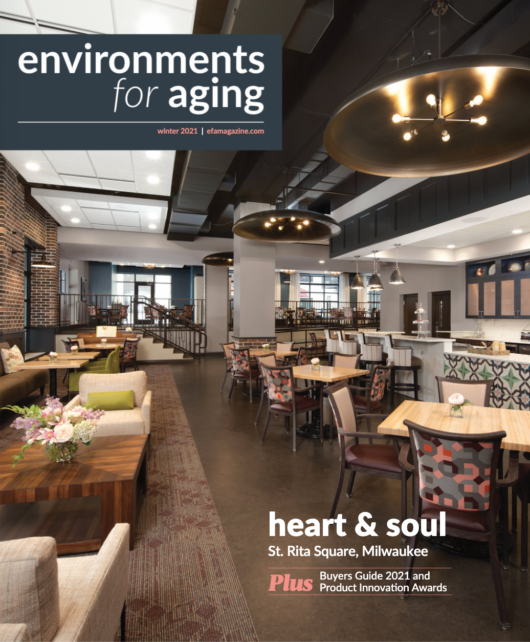Contribution
Environments for Aging – Digging Deeper
Taking a holistic approach to biophilic design can help support seniors' specific health issues
Article Summary
Though the research supporting biophilic design applies fairly universally (across age, gender, ethnicity, socioeconomics, upbringing, etc.), designers can identify which health impacts are most critical to senior populations and use biophilic interventions to intentionally create spaces that nurture, inspire, comfort and heal relative to their unique needs. Common yet specific health conditions that impact user experience can be attenuated, at least in part, by asking which experiences of nature support the desired health outcome(s).
Opportunities for incorporating the 14 patterns of Biophilic Design can seem limited when working within the confines of older buildings, but successful biophilic design is about quality over quantity. For existing communities where renovations are minimal in scale, a few well-planned, tactical interventions can be very effective. These smaller strategically placed interventions, also known as biophilic acupuncture, aim to elevate the biophilic experience without commandeering large budget sums or square footage.
RDG’s online News also provides a summary and link to the article.
Authors
Catie Ryan, WELL AP, LEED AP BD+C (LinkedIn profile)
Director, Terrapin Bright Green
Lara Slavkin, IIDA, WELL AP (LinkedIn profile)
Interior Designer, RDG Planning and Design
Jay Weingarten, AIA, WELL AP (LinkedIn profile)
Architect, RDG Planning and Design
Citation
APA
Ryan, C., Lara Slavkin, L., & Jay Weingarten, J. (2021, Winter). Digging Deeper. Environments for Aging, 35-37. https://www.nxtbook.com/emerald/efa/2021Winter/
MLA
Ryan, Catie, Slavkin, Lara, & Weingarten, Jay. “Digging Deeper.” Environments for Aging, Winter 2021, pp. 35-37.

